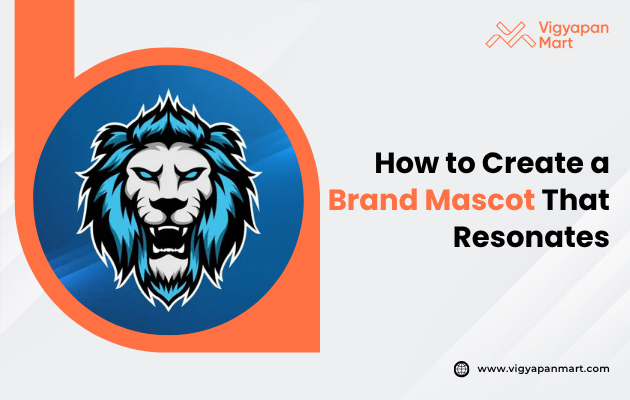How to Create a Brand Mascot That Resonates?

Creating a mascot is much more than just creating cute characters for your brand. It’s about crafting a symbol that speaks your brand identity, communicates its values, and builds an emotional connection with your audience. A successful mascot can make your brand human and make it memorable. In this blog, we will explore how you can create a brand mascot that resonates.
1. Understand Your Brand Identity
Before you even start your brand mascot idea, it is important to understand your brand identity. For that, ask yourself:
- What are your brand’s core values?
- Who is your target audience?
Answering these questions will help you build your mascot's appearance and outlook. For instance, if you are a kids’ brand, you need to build a playful mascot; similarly, a sleek mascot will fit tech brands. It would be helpful if you just think of your brand as another person, and how it would have spoken to your audience then. That’s how your mascot should act.
2. Choose The Right Mascot Type
There are different mascot types:
- Human Characters: That are relatable and expressive.
- Animals: They are versatile and approachable.
- Objects with faces: Sounds quirky.
- Abstract logos turned into characters: Modern approach.
Each type of mascot evokes different emotional signals. You should consider what your audience connects with. Choose a mascot type that not only allows flexibility in design but also has the ability to grow your brand.
3. Design For Emotional Connection
Your brand mascot should stir positive reactions like trust and joy. You can use facial expressions, gestures, and colors to connect with your audiences. Having big baby eyes can convey innocence, and colors like blue and yellow can influence perception to trust. A mascot that brings a smile to your face is what you remember. Think of Disney characters– the big eyes, raised eyebrows, and every tilt of the head feel real and relatable. Your goal should be to spark familiarity among the audience every time they see your brand.
4. Ensure Consistency Across All Platforms
Your mascot must be consistent across all the platforms, be it your website, social media, or packaging. Your consistent appearance will build recognition and trust. Having a familiar mascot builds your brand identity. Doesn’t matter whether it’s animated or static; all it needs to be is a recognizable personality that matches your platform’s tone. It can be playful on social media, supportive in customer service, etc. Consistency is what evokes trust in your audience and makes your mascot an important brand asset.
5. Engage Your Audience With Storytelling
To be successful, your mascot needs a solid backstory. Where is it from? What is your mission? Having a character with a vivid personality and quirks feels more relatable. Your storytelling can be shared via social media or short videos that will make your mascot memorable to all. Even a short original story can have a deep impact. Your story will activate the imagination of the audience and invite participation. Your audience might create their own content featuring your mascot.
6. Evolve With Time
Great mascots adapt to the trends. You don’t have to change or reinvent your entire mascot with trends, just upgrade your design and style. Keep the core personality of your mascot alive, with a pinch of modern elements. Staying relevant and relatable helps in retaining an emotional connection. Brand mascots also evolve with causes and events. For instance, limited edition versions that launch during holidays. A mascot that feels current without losing its original essence is appreciated.
Conclusion
A mascot is considered perfect when it is emotionally ringing, and connects tightly to your brand identity. So, make sure you design it with purpose, consistency, and emotional appeal. With proper strategy, creativity, and content, your mascot can become the face of your brand, memorable, engaging, and loved by the audience. Want to launch a mascot outdoor advertising campaign? Connect with Vigyapan Mart marketing experts today.









